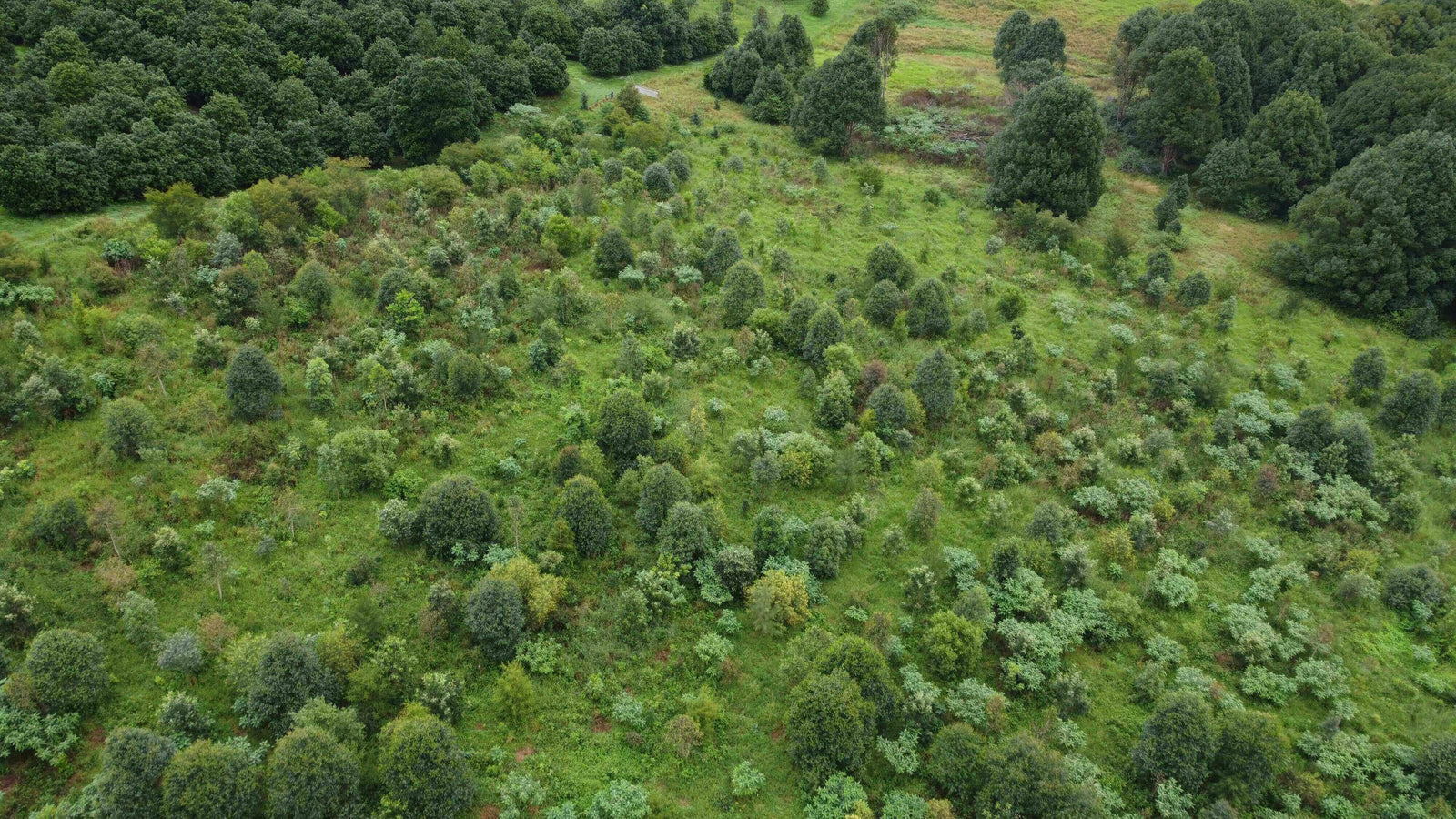Invigorating Biodiversity In The Byron Hinterland
Anam Talamh is situated on Bundjalung Country in the lush and fertile Byron Bay hinterland. The coastal region in northern NSW has a subtropical climate that is very effective in growing forests and capturing carbon.
This revegetation project is restoring critically endangered native rainforest species to help bolster the Lowland Rainforest of Subtropical Australia, affectionately referred to as the Big Scrub. It will deliver climate action and help provide vital habitat for koalas, The Wompoo Fruit Dove and other wildlife in the region.
Additionally, through this project, Greenfleet aims to restore less productive areas of the property including ephemeral floodplain and help restore the Skinners Creek habitat corridor.
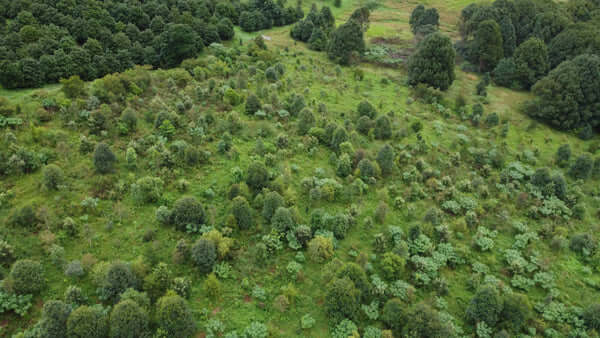
Native Revegetation Approach
Between 2020 and 2023, Greenfleet planted nearly 73,000 native trees across 50 hectares at Anam Talamh.
Restoring the region’s biodiversity is vital. Due to the historic widespread clearing of the Big Scrub rainforest for high value Red Cedar (Toona ciliata) and for agricultural development, only one percent of it remains.
Greenfleet has planted 60 different native species on the property including Red Cedar, Tallowwood (Eucalyptus microcorys), Forest Red Gum (Eucalyptus tereticornis) and Southern Silky Oak (Grevillea robusta), an evergreen tree that can attract native birds and marsupials.
As this forest grows, it will continue to increase the resilience of the area’s native ecology. Greenfleet’s forest at Anam Talamh is legally protected for 100 years, which means it will provide a wealth of environmental benefits over its lifetime.
Picture: This photo was taken by our Revegetation Team during post planting monitoring in 2022.
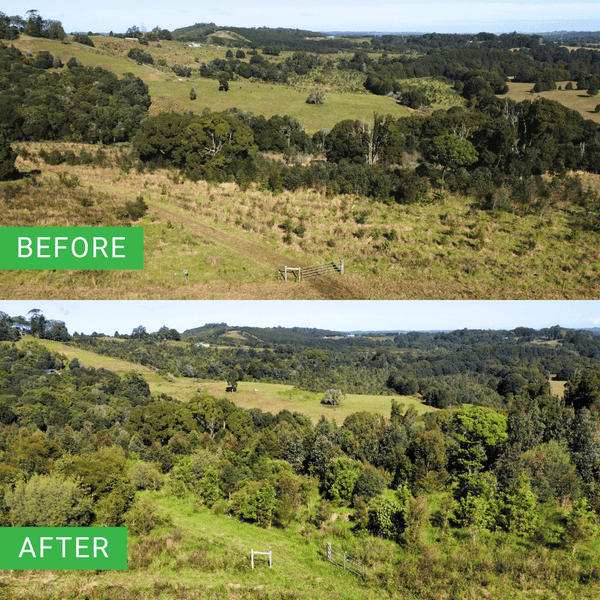
Restoring Koala Habitat
One key benefit of the restoration work occurring at Anam Talamh, is the habitat being created for the region’s koalas.
Australia’s iconic koalas are classified as endangered in NSW, and by planting species such as Forest Red Gum (Eucalyptus tereticornis), we are restoring vital habitat and food trees for these animals. This is also a relatively fast-growing species and its inclusion in the planting will also help establish the forest canopy.
Greenfleet’s work at Anam Talamh complements other koala restoration projects occurring in Northern NSW including Spurfield Road, and Greentrees, a site where koalas have been found utilising the trees within just a few years of growth.
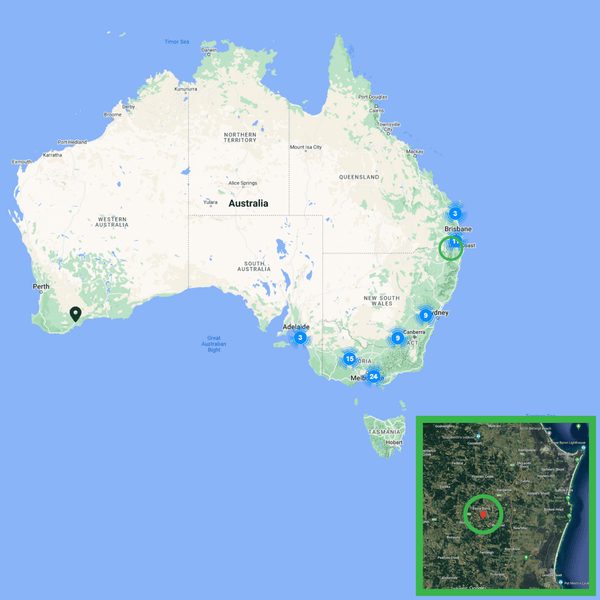
Location and Map
Less than half an hour’s drive from the township of Byron Bay, this verdant forest sits in the hinterland of northern New South Wales. Previously cleared for its valuable timber assets as well as farming, Anam Talemh is showing that by planting multi-species native trees, the forest will remove carbon from the atmosphere as well as bring benefits to local wildlife from the restored ecosystem.
This is one of Greenfleet’s many projects in New South Wales. You can see where other Greenfleet projects are located in Australia and New Zealand here.
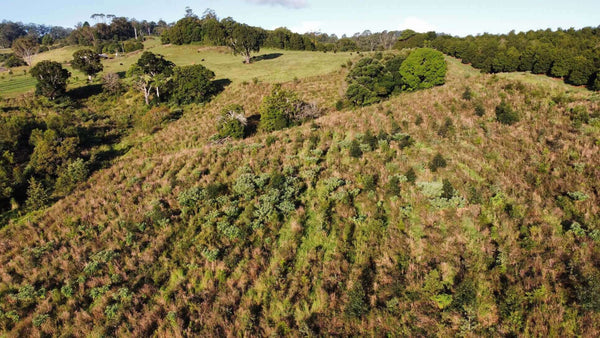
Climate Action
This forest is legally protected for 100 years with a legal agreement in the title of the land. Over its lifetime, it will remove around 89,000 tonnes of carbon from the atmosphere which approximately equates to what 20,700 average cars emit on our roads in a single year.
Location Size
50 hectares in the Byron Bay Hinterland
Planting Dates
2020, 2021
Species
- Acmena ingans
- Araucaria cunninghamiana
- Argyrodendron actinophyllum
- Argyrodendron trifoliatum
- Brachychiton acerifolius
- Castanospermum australe
- Cryptocarya glaucescens
- Cryptocarya obovata
- Diploglottis australis
- Dysoxylum fraserianum
- Elaeocarpus grandis
- Eucalyptus grandis
- Eucalyptus microcorys
- Eucalyptus pilularis
- Eucalyptus resinifera
- Eucalyptus tereticornis
- Ficus macrophylla
- Ficus obliqua
- Ficus rubignosa
- Flindersia australis
- Flindersia schottiana
- Flindersia xanthoxyla
- Gmelina leicharddtii
- Lophostemon confertus
- Planchanella australus
- Podocarpus elatus
- Rhodosphaera rhodanthema
- Syncarpia glomulifera
- Syzygium francisii
- Toona ciliate
- Acacia aulacocarpa
- Acacia melanoxylon
- Acmena hemilampra
- Acmena smithii
- Alphitonia excelsa
- Archontophoenix cunninghamiana
- Casurina cunninghamiana
- Commersonia bartramia
- Ficus fraseri
- Glochidion ferdinandi
- Grevillia robusta
- Harpulia pendula
- Jagara pseudorhus
- Lophostemon suaveolens
- Macaranga tanarius
- Melaleuca quinquinervia
- Melaleuca stypheloides
- Pittosporum rhombifolium
- Syzygium australe
- Syzygium leuhmanii
- Syzygium mooreii
- Syzygium oleosum
- Callistemon viminalis
- Ficus coronata
- Guioia semiglauca
- Hymenosporum flavum
- Melaleuca bracteata
- Melia azedarach
- Omalanthus populifolius
- Pittosporum undulatum


